
Fredventure, Part 1 by Andi Q. '25
MITWE (+ FJE and VJE) go to Brazil
Prologue
“Guess what, gang?” Fred Harris – the director of the MIT Wind Ensemble (MITWE) – announced one day during our regular Wednesday rehearsal, “We’re going to Brazil!”
Suddenly, samba music began blasting from a dozen speakers hidden around Kresge auditorium while the stage transformed into an impromptu dance floor. That Friday, we performed in the famous Teatro Amazonas in the heart of the Amazon rainforest.
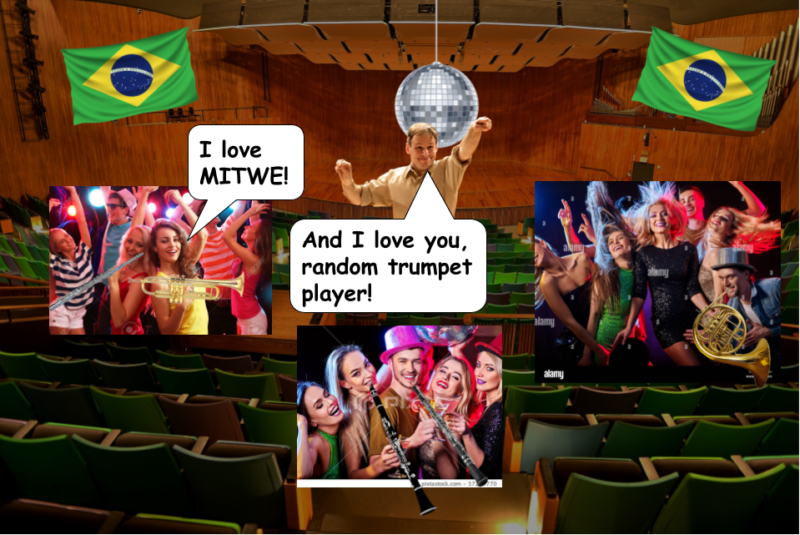
How it went down in my head.
… well, maybe that’s not exactly how it all happened, but it sure felt that way. The whole experience was so incredible that I still can’t quite comprehend how it was all orchestrated (pun intended).
It all started in my first-year fall semester when we performed our first Hearing Amazônia concert. It was a massive three-way collaboration between MITWE, the Festival Jazz Ensemble (FJE), and the Vocal Jazz Ensemble (VJE), starring seven(!) guest artists and three guest speakers. At the time, I thought it would be a one-time event because of the sheer scale and effort of coordinating it all. Plus, I was unaware of any connection between MITWE and Brazil, so I assumed we performed Brazilian music because it sounded fresh and funky01 It really does .
Little did I know that the concert (and many more future events) were already in the works for several years. In fact, the trip to Brazil would likely have happened in 2020 if COVID hadn’t appeared and disrupted everything. Thanks to Fred’s commitment to environmentalism and music education, he moved heaven and earth behind the scenes to forge a meaningful connection between MIT and communities in the Amazon rainforest.
For the rest of my first year, references to Brazil were scattered across our rehearsals and performances. At the end of that fall semester, we read through a set of traditional Brazilian music arranged for the wind ensemble by some Swiss music students; the following spring, we performed those pieces in a concert. Finally, in my second-year fall semester, the big announcement was made – we were going on an all-expenses-paid trip to Brazil to learn about their local music and perform in a concert!
Day 1
Fast forward to about three weeks ago, and we’ve arrived in Manaus – a Brazilian city in the middle of the Amazon rainforest. What a way to start my spring break! Immediately upon landing, I could tell that Manaus was a very cool place (but not literally – it was 30°C02 86°F outside). Thanks to the city’s latitude and the time of year, objects outside cast virtually no shadows when the sun was directly overhead. Unfortunately, I had very little bandwidth to marvel at this phenomenon because I’d failed to get enough sleep (and food) on the two flights it took to get to Manaus, but lunch was awaiting us at the hotel when we arrived.
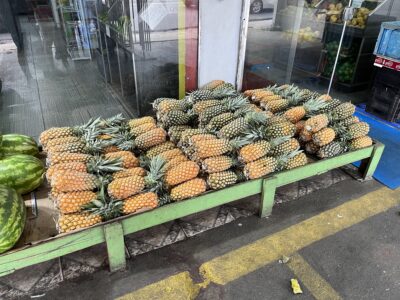
Check out these extra long pineapples.
I thoroughly enjoyed eating Brazilian food. The cheese bread and filet mignon (which was somehow available at almost every meal) were superb, and the pineapples in MIT dining halls wouldn’t be as sweet as the Brazilian ones, even if I dumped a spoonful of sugar onto them.
After trying (fruitlessly) to nap, I went to a nearby supermarket with a few other MITWE members to buy bottled water (since we were advised not to drink the tap water). We also decided to try some local ice cream flavours there – an excellent decision for everyone except one of the percussionists, who accidentally bought a giant block of plain ice instead.
For dinner, we went to Luar de Uaicurapá – a nightclub-esque restaurant famous for live Boi-Bumbá music. Unfortunately, some wires must’ve crossed somewhere because the restaurant ran out of food for us, so we had to return to the hotel two hours earlier than planned. (But at least that meant I could sleep longer that night.)
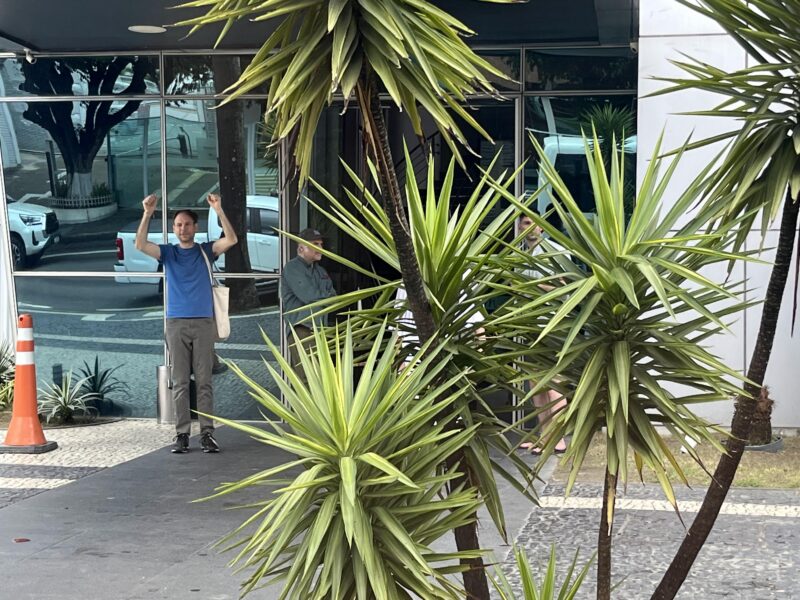
Fred picture of the day.
Day 2
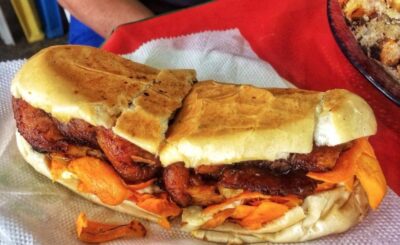
An x-caboquinho.
At breakfast, I was greeted by yet more delicious Brazilian food – tapioca crepes, locally-made cheese, and a peculiar sandwich named “x-caboquinho”, made using fruit with the texture of dried mango and the taste of avocado. (It was also during breakfast when I learned that the letter “x” is pronounced “cheese” in Portuguese.)
The day’s main activity was visiting the São Sebastião community (an indigenous community that I think works with MIT). To get there, we took a boat ride up the Rio Negro – one of the two rivers that run through Manaus.
At the community, the locals welcomed us with open arms and performed some dances they’d prepared for us. We then learned about their robotics projects for protecting the rainforest, from building rafts for measuring river pH levels to teaching kids how to fly drones to identify illegal deforestation. Most of those projects were possible thanks to the Nobre Academia De Robótica – a local startup aiming to help indigenous communities through robotics education. I couldn’t help but marvel at the powerful drones they had there; one even had VR capabilities!
The locals also offered us a selection of home-grown fruit, ranging from fresh Brazil nuts to rambutan (which I found very surprising because I’d previously only ever seen it in East Asia). “Wow!” I thought, “ Ananda03 One of my MIT friends from Brazil was right – all the fruits here are amazing!”. However, Ananda was wrong – meet cupuaçu.
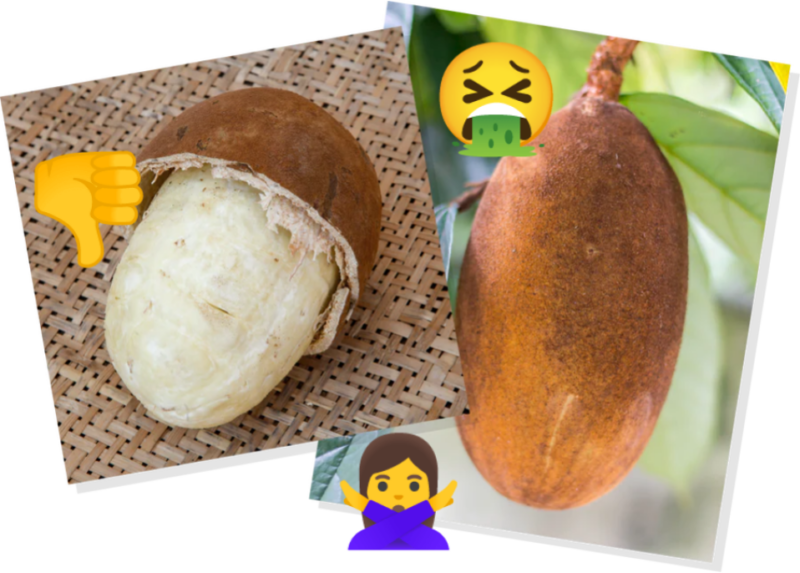
More like cupuASSu.
A cousin of cacao, cupuaçu is a very popular fruit in Northern Brazil. But don’t let its innocent looks deceive you! Almost every dessert we ate in Manaus contained it in some form… which was kind of a problem for us because it tasted like raw fish soaked in kerosene. (I could probably write an entire blog post about how much I despise cupuaçu, but I’ll focus on the positives of the trip instead.)

Fred wading into water.
After the sky cleared, we walked along the river bank, where we saw some kids doing backflips off tall trees into the river. Apparently, this inspired a group (including Fred) so much that they waded into the river to try to join the kids.
At night, there was a dress rehearsal for an upcoming festival in the city, and we were encouraged to attend. In true MIT fashion, however, I elected to stay back at the hotel and write my thermodynamics lab report. I certainly appreciated the extra few hours of sleep, but admittedly I somewhat regret not seeing a blue Coca-Cola advertisement in person.
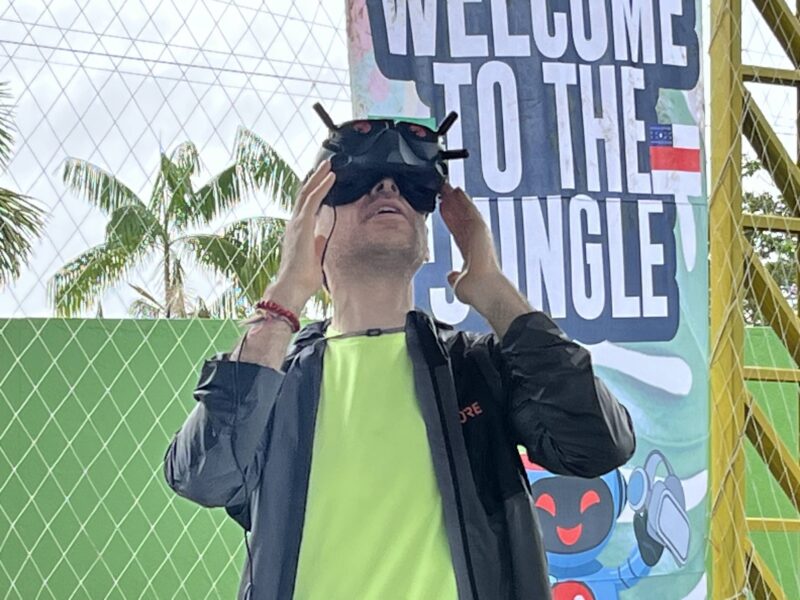
Fred picture of the day.
Day 3
We started off the third day by visiting a museum about the history of Manaus. It was interesting to learn about the local history (especially after taking 21L.01904 Introduction to European and Latin-American Fiction ); however, the most fun part of the experience was when Fred tried to sneak off into the city alone. And he would’ve gotten away with it too if it weren’t for those meddling kids responsible tour guides!
Next, we went to a market in the middle of the city. Some vendors offered some… rather interesting items (“all natural Amazonian Viagra™ – made from guaraná!” one sign read), although I was drawn more toward the handmade musical instruments they had on display. Specifically, they had an assortment of wooden slide whistles and recorders. I quickly discovered that the recorders had similar fingerings to a clarinet, so I played a few snippets from our more classical repertoire, much to the amusement of the others on the trip.
For lunch, we went to a “floating restaurant” (basically a restaurant on a boat) where we could see monkeys, iguanas, and giant water lilies. On the way, we passed the Meeting of the Waters – a natural phenomenon where the Rio Negro and Rio Amazonas meet but don’t mix for 6 kilometres05 Almost 4 miles . The views from the water don’t do it justice because we couldn’t see very far on our boats, but aerial images showed me just how striking it is.
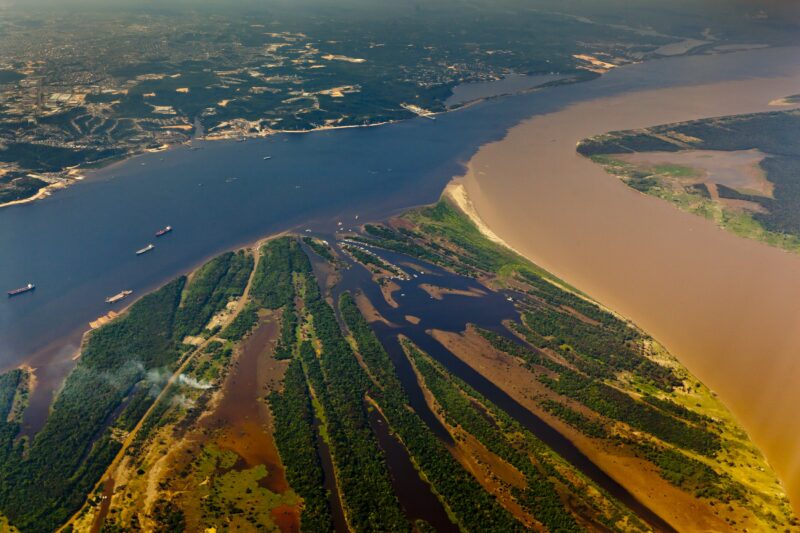
An aerial view of the meeting of the waters (not my picture).
Nevertheless, there were still advantages to being on the water – we saw dolphins in the river!
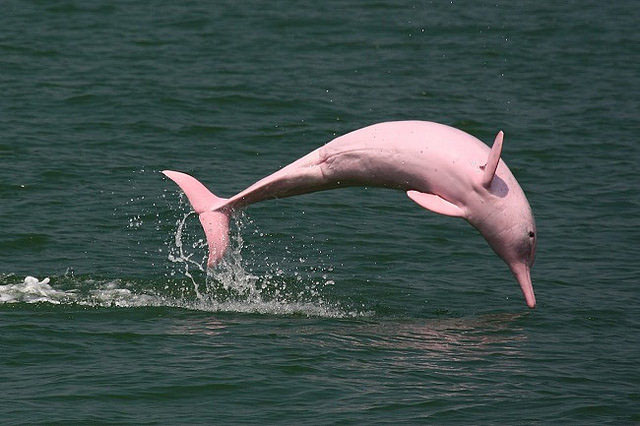
We only saw the regular grey dolphins, but there are also pink ones like this in the river. However, they’re extremely rare.
As we ate lunch, a storm was brewing overhead. We didn’t pay too much attention to it, but a heavy rain pour broke out just as we were about to leave, stranding us for an hour! Being musicians, however, we all decided to pass the time by singing the songs in our upcoming concert. Before long, the storm passed, and we were back at the hotel.

Fred picture of the day.
In the blink of an eye, the first third of the trip was over already. But the real Fredventure is just getting started! Stay tuned for parts 2 and 3, featuring:
- A tour of the rainforest.
- Indigenous instruments and rhythms.
- More Fred shenanigans.
- The science of disaster films.
- And why you should join MITWE too ( especially if you play the bassoon06 Please, we are desperate )!
- It really does back to text ↑
- 86°F back to text ↑
- One of my MIT friends from Brazil back to text ↑
- Introduction to European and Latin-American Fiction back to text ↑
- Almost 4 miles back to text ↑
- Please, we are desperate back to text ↑